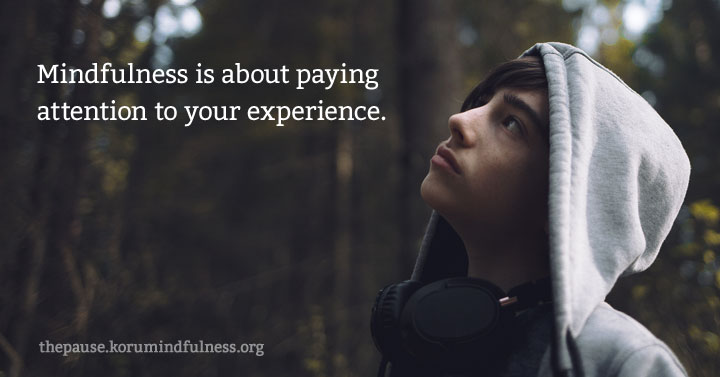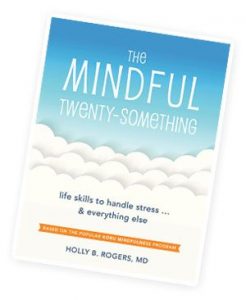
“Mindfully stepping on the path to happiness with Skillful Mindfulness” is part 2 of our series on the traditional Eightfold Path for the cessation of suffering offered by the Buddha 2500 years ago. Missed our other posts? Read them all here.
This week we head out on the Buddha’s Eightfold Path that takes us to the end of suffering. In case you missed it, last week I set the stage for our journey.
First stop for us: Skillful Mindfulness.
I chose to start with Skillful Mindfulness, because you can use what you learn at this step to help you with each subsequent step. You’ll see what I mean as we move along.

This is largely because the little bumps are everywhere. We are tripping over them every which way we turn all the time. Skillful Mindfulness is how we learn to navigate smoothly as we make our way through them.
Little Suffering goes shopping
Here’s a story to illustrate:
Shop therapy was Marta’s preferred method of stress management. As a graduate student in physics, she spent her weeks pedaling fast, trying to keep up with a heavy workload. When the weekend arrived, she allowed herself one whole day off and she took herself shopping to relax.
Despite her day of shop therapy, Marta felt like her stress levels were getting in the way of her productivity, so she signed up for a mindfulness and meditation class. She began to diligently spend 10 minutes a day practicing meditation, and she tried to integrate mindfulness into at least one of her routine activities each day.
As her mindfulness practice progressed, she got better at carefully noting her thoughts and feelings as she went about her day. On one of her shop therapy outings, she found she was particularly aware of her experience.
She felt cheerful as she headed to her favorite shopping locale, but she hadn’t been there long, looking in the windows and trying on some clothes, when she began having critical thoughts about her appearance. She saw she was comparing herself to other women and feeling that she didn’t measure up. Her happy mood dissipated.
To cheer herself up again, she bought herself some expensive make-up, justifying it to herself by saying, “I deserve this.”
Though she was initially pleased with her purchase, on the way home she started to fret. “I probably shouldn’t have spent so much money. Money is tight this month.” She felt the tightness in her chest that meant her anxiety had started to rise.
Marta said this about her experience:
I realized when I got home that my shop therapy made me feel worse instead of better. It made me feel bad about my looks and stressed about money. I think it is time to learn a different stress management strategy.
So the next weekend, instead of going shopping, Marta went for a walk in the woods with some friends. She spent some time lying on her couch reading fantasy fiction, a former favorite pastime. She hung out with her grandma who lived nearby.
She observed that at the end of her day off she felt calm and refreshed, much more so than she ever did after a weekend spent at the mall.
Skillful Mindfulness meets Little Suffering
Marta’s story is a great example of using Skillful Mindfulness to learn from and grow from Little Suffering.
Sometimes people think of mindfulness as something you use while you meditate for a few minutes a day, and then you are done with it. But it really isn’t like that. It is more a way of being in the world, a way of approaching everything you do.
What made Marta’s mindfulness particularly skillful? Let’s count the ways:
1. Marta didn’t leave her mindfulness on her meditation cushion (or chair).
She carried it with her as she went about her day, staying open to her moment-to-moment experience.
2. Marta was doing her best to monitor her thoughts, feelings and body sensations for information about her experience.
Thus, she noticed when self-critical thoughts arose, when her mood shifted, and when her chest tightened with anxiety.
3. Marta cultivated curiosity about her reactions.
She responded with an attitude of “that’s interesting” rather than self-criticism or denial. For example, when she noticed she was feeling bad about herself, she didn’t waste time on self-blame. Instead, she got curious about whether she could find different activities that would not trigger the critical thoughts.
4. Finally, Marta used her observations to inform her choices and change her behaviors.
When she saw clearly and precisely that her shop therapy was causing Little Suffering, she chose to do things differently.
This last step is the true hallmark of Skillful Mindfulness: using your clear awareness of reality to learn and grow. If you are paying careful attention, you will be open to insights that guide you towards happiness.
Henepola Gunaratana, one of my favorite meditation teachers, explains:
Wisdom…is the real purpose of mindfulness, for insight into the true nature of reality is the ultimate secret to lasting peace and happiness.
It just takes a little practice
So there you have it. The ultimate secret to lasting peace and happiness is to bring non-judgmental awareness, as best you can, into all that you do. And then learn from what you observe. And then make small changes as a result of your new knowledge. That’s Skillful Mindfulness.
Whoa! That seems like a big ask. No one can be mindful all the time; most of us can’t be mindful most of the time.
 True, but with practice, we can all get better at it. You practice mindfulness by spending some time each day in meditation. If you don’t already have a meditation practice, it is pretty easy to get started. If you like, you may download the free Koru Mindfulness app, set the timer for a few minutes, pick a guided meditation, and begin.
True, but with practice, we can all get better at it. You practice mindfulness by spending some time each day in meditation. If you don’t already have a meditation practice, it is pretty easy to get started. If you like, you may download the free Koru Mindfulness app, set the timer for a few minutes, pick a guided meditation, and begin.
Good news is that it doesn’t take that much practice before mindfulness starts bubbling up when you are not meditating. Marta had been practicing for just 10 minutes a day for a couple weeks when she started having insights about her life.
Developing Skillful Mindfulness is essential to your journey through the remaining 7 steps on the Buddha’s path to happiness. Come back next week to see where we are headed next.
Can you think of a time you’ve used Skillful Mindfulness to learn from and grow from Little Suffering or Big Suffering? Share them below. We’d love to support you on your journey.
Photo by Anthony Ginsbrook on Unsplash
Get our latest articles in your inbox.

I practice meditation for 5 to 10 minutes per day. I am always distracted of getting up and doing something. I’m emotionally and financially stressed. I gamble, thinking that It will solve my problem. Unfortunately, when I lost all my money I feel down and back to my problem.
I have no control with my emotion. I need help. Meditation and being mindful might be helpful for me.
It is a beautiful insight that you are struggling and can use some help. Sometimes the greatest gift of mindfulness, is that it allows us to recognize when we need help, and then take the next step by seeking help. Gambling is a habit that is so destructive and hard to break on your own. But there definitely is help for it. I hope you will take the next step and reach out to a professional who can help you.
Recently I was to know your book – The mindfulness Twenty Something – and practiced a meditation. I heard that some advanced books as like your book. Can you introduce me the books? I’m trying to find them but I can’t.
– from a visiting scholar from South Korea –